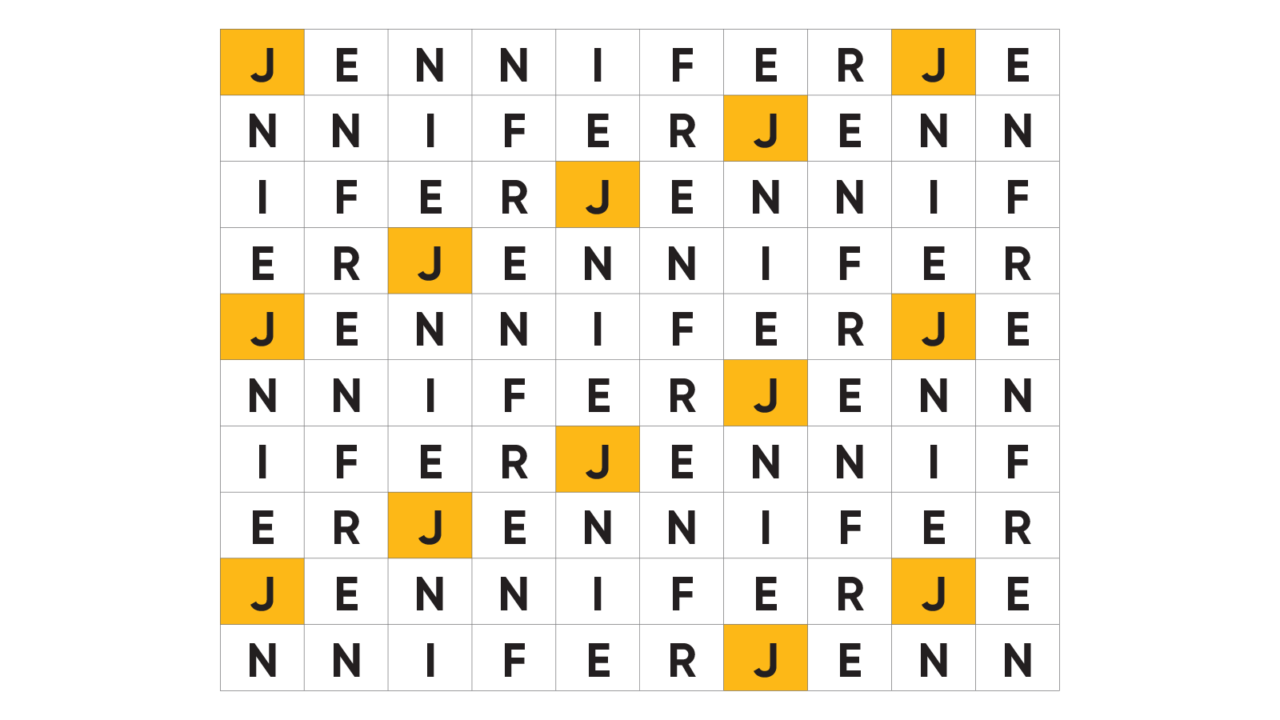
Imagine you enter a building and are confronted with two doors.
- Door 1: The floor is several feet off the ground, requiring you to reach high to open the door and climb in. The ceiling is so low that you have to crouch to walk through.
- Door 2: The floor is flat and level with the front of the building, and once you open the door, the ceiling is so high that walking into the room feels like walking into a palace.
Which door better represents how you want your students to feel when they start to learn something new?
Naturally, most teachers would opt for the second door. Although it is easy to pick a choice in a metaphor like this, it is quite a bit more challenging to actually plan specific, standards-aligned classroom instruction.
First, a quick note on language: in the context of math class, a task is any mathematical activity that is designed to focus a student’s attention. It can be a single problem (“multiply 35 and 18”), a set of problems (“complete this page of multiplication problems”), or a more open-ended performance task (“plan the layout of floor tiles for a room that’s 35 feet wide and 18 feet long”). In this article, we dig into what exactly gives a math task a low floor and a high ceiling and how you can create tasks in this way.
What Is a Low Floor?
A task has a “low floor” when it’s accessible to all students. Oftentimes, this is thought of in regards to numerical complexity. There is no question that changing a fraction to a whole number, for instance, usually lowers the floor of a math task. However, a low floor often pertains to non-mathematical content, such as requiring minimal background knowledge or having clear and concise instructions. If the task were a room, then a low floor means that all students, no matter their math experiences, can walk in without needing assistance. Consider these two tasks:
- Compare the graph of \(x+y=1\) to the graph of \(\begin{cases}x + y = 1\\ x - y = 1\end{cases}\).
- What are the similarities and differences between a point and a line?
These two tasks have a lot in common and can both, for example, be the starting problem for a lesson on solving two-variable equations. They can both be investigated algebraically or geometrically. There are many ways to answer both questions. However, the second task has a much lower floor. There isn’t much background needed to understand the mathematical notation, nor is there a need to recall how to solve a linear equation. A student who struggles with basic graphing could still be a part of a classroom discussion on the second task and in effect “enter the room.”
What Is a High Ceiling?
While a low floor helps all students enter the “room,” a high ceiling is what keeps them there. A task has a high ceiling when it has ample space for exploration and does not end once the student finds an answer. Consider these two tasks:
- Find the sum of the first five odd numbers.
- What patterns can you find when adding odd numbers?
The first task has a relatively low floor, as any student who can define odd numbers and perform basic addition should be able to calculate the sum of 25. The second task, however, practices the same basic skills but opens up a world of mathematical exploration. The second task is open-ended and can lead to deeper investigation, such as why the sum of two odd numbers is always even or why the sum of consecutive odd numbers starting with 1 is always a perfect square.
A high ceiling ensures that the task continues to engage students who have more mathematical experience and can apply higher level math skills. They can explore the task in different and more sophisticated ways and continue to be challenged while students with less math experience are also engaged with the same task.
What Does Low Floor, High Ceiling Mean in Math?
So, putting the two together. The ideal tasks to give students are ones where all students can find their way in, then they can stay engaged for however much time they have. Low-floor, high-ceiling tasks are not only accessible by virtue of having a low floor but rigorous by virtue of having a high ceiling. In our Into Math product, we consider high-quality math tasks to be those that have a low floor and a high ceiling.
Tasks designed in this way follow principles of Universal Design for Learning, or UDL, as they are intended for students of all abilities and experiences to be able to approach and investigate. The low floor also makes them useful in an intervention setting and valuable across all tiers of a multi-tiered system of supports, or MTSS.
Notice that low floor, high ceiling tasks are about accessibility and rigor, not necessarily difficulty. If the entire class finds a task too easy or too hard, then it has too low a ceiling or too high a floor, respectively. Along these lines, low floor, high ceiling tasks are not simply a progression of problems organized from easiest to hardest. Not only is difficulty subjective, problems organized in this way immediately discourage students who are stuck on the first problem (not necessarily a low floor) and have an arbitrary capstone that some students may still find easy (not necessarily a high ceiling).
Tasks with a low floor and high ceiling in particular facilitate productive struggle. Because the task is not limited to a single approach or solution, students can explore problems in their own way and at their own pace. When they feel stuck, ideally they are motivated to try new strategies and persevere in the face of confusion. A task that is well designed in this way reduces how often a teacher must intervene, and when student scaffolding is required, it can be minimal and provided at exactly the point of need.
How Do You Design Low Floor, High Ceiling Math Tasks?
Tasks of all kinds can be transformed into low floor, high ceiling tasks. It comes down to answering two straightforward—but not easy—questions:
- How can I give the task a low floor so that all students can start to engage with the task?
- How can I give the task a high ceiling so that students can continue to engage with the task?
There are a few key strategies that can help transform any task into one with a low floor and high ceiling.
Strategy 1: Students Select the Models and Tools
Tasks are often designed with specific models or tools in mind, for example asking students to multiply and specifying whether to use an area model or standard algorithm. These can introduce unanticipated barriers for students. Students from different schools may have learned different representations. In fact, an English language learner may know a different algorithm from a different culture! Opening up what models or tools to use lowers the floor of a problem so that more students can find their way in:
- Original Task: Represent the multiplication problem 35 × 28 as an area model, and then use the model to find the product.
- Revised Task: Draw an image that represents the multiplication problem 35 × 28.
Even if the skill being taught is using an area model, the revised task still works as an entry point. If students recently learned the area model, then some of their images will likely serve as good models for a discussion. If students have not yet learned about an area model, their drawings can become the starting point for a discussion that leads into what an area model is.
Strategy 2: Students Provide the Numbers
A common obstacle that stops math students from getting through a problem is struggling with arithmetic. Even if students understand what to do in a complicated word problem, if part of the solution involves adding \(\frac{5}{8}+\frac{1}{10}\) and they aren’t sure how to add fractions, then they will get stuck before finishing the problem. One tactic for lowering the floor is simply to cover up the numbers in a word problem:
- Original Task: Find the volume of a box that will fit 20 copies of a book, where each book is \(11\frac{1}{8}\) inches high, \(9\frac{3}{16}\) inches long, and 2 inches wide.
- Revised Task: Find the volume of a box that will fit ___ copies of a book, where each book is ___ inches high, ___ inches long, and ___ inches wide.
This keeps the task intact but changes the conversation so it’s focused on the context, not the calculations. Valid classroom conversations can include how many books would realistically go into a box, what kinds of numbers would show up in the dimensions, and how much rounding is appropriate. It is usually also possible to transform a task so that it is stripped of all numbers but still has students working on the same skills. Contrast the accessibility of these two related tasks:
- Original Task: Find the volume of a box that will fit 20 copies of a book, where each book is \(11\frac{1}{8}\) inches high, \(9\frac{3}{16}\) inches long, and 2 inches wide.
- Revised Task: The book you just wrote is a hit! Design a box that will fit enough copies of the book to send them to a bookstore.
Where did the numbers go?! A student overwhelmed by multiplying \(11\frac{1}{8}\) by \(9\frac{3}{16}\) now has an entry point into why “weird-looking numbers” get multiplied in the real world. Even if a student starts by designing a box that is a mile long and fits 5-foot tall books, that student has still solved a math problem and opened themselves up to follow-up mathematical questions and a more refined solution. “How many copies of the book should you send?” “What are the measurements of a book that’s about the same shape as one you would write?” “What are the dimensions of a box that fits all of the books perfectly without any movement during shipping?” An important part of teaching rigorously is thinking about application. “Is it possible to ship a box that’s a mile long?” “What’s better, a box that’s a mile long, or thousands of boxes that are only a few feet long?“
Strategy 3: Students Choose from Alternative Directions
For one reason or another, you may not have much leeway in how a task is written. Imagine four problems that come directly from a practice assessment:
- Add 700 + 200.
- Add 700 + 20.
- Add 270 + 170.
- Lea drove 270 miles to reach one city. Then she drove 170 miles to reach another city. How many miles did she drive in total?
Even in cases like this, there are ways to make the task more broadly accessible. The directions, either explicitly or implicitly, are likely, “complete all four problems.” But different directions can both lower the floor for students unsure how to solve any of the problems and also raise the ceiling by getting students to investigate what they can do more deeply. Consider these alternative ways of providing the task:
- Solve one of the four problems, and then create four new problems similar to it. How are they similar?
- Choose one of the four problems, and then solve it using three different strategies.
HMH offers one-hour live, online course modules designed to flexibly support school and district professional learning initiatives. The course module titled “Make Math Tasks Accessible to All Learners” dives deeply into these strategies for transforming a task. Below is a free resource around the strategy of students choosing from alternative directions.

Low Floor, High Ceiling Math Examples
As any math task can be transformed into one with a low floor and high ceiling, it follows that examples of low floor, high ceiling math tasks can come from anywhere. There are tasks that are intrinsically broad and accessible, which can effectively be made as simple or complicated as the situation calls for:
- Make up a movie you would like to see, then estimate the budget needed to produce it.
- Make up and answer your own probability question.
- Create and describe a shape that you’ve never seen before.
There are also tasks that are not broad, but still accessible, and able to scale to whatever each student is ready for. Jennifer Lenhardt, an instructional designer for HMH, reflects on what she did as a teacher: “When I taught middle school math, I used a name patterns task at the beginning of the year to engage students in mathematical thinking that was accessible and interesting to them.” The task had three steps:
- Students wrote their names sequentially character by character on a 10 by 10 sheet of grid paper. If their name was more than 10 characters, they continued writing on the next line.
- They highlighted or colored in each square with the first letter of their name.
- Once all students were ready, they were tasked with finding a classmate who had a matching name pattern.

Lenhardt continues, “This task got our class off on the right foot immediately with me posing math problems that every student could engage in, and allowed for interesting discussion of questions like, ‘What size grid would you need to have your name pattern match a different student’s pattern?’”
The Grade 6 activity “Cozy Cuts” shows another activity designed with a low floor and a high ceiling. Students able to calculate area will be able to complete the task, and students ready for a bigger challenge can design their own scarves and patterns.
The Benefits of Low Floor, High Ceiling Math Tasks
The benefits of low floor, high ceiling tasks come naturally from having a low floor and high ceiling. Students can enter into the task no matter where they fall on the ability spectrum. Students can spend as much time on the task as they are allotted.
There are less direct benefits that come from using these kinds of tasks, too, such as expanding the options for configuring small groups. When all students can help with a task, groups can comprise students with mixed abilities. A task that pertains to dancing, for example, can be given to a group of students who all love dancing. Groups can be assembled based on what would keep everyone engaged rather than how students perform in a specific skill.
Low floor, high ceiling tasks also help to eliminate linguistic barriers. When a problem has a low floor, a multilingual learner is less likely to get stuck just because of a problem’s language complexity. All learners have the potential to be mathematicians when there is motivation, and well-designed tasks will keep learners engaged. Think of the classroom as an airport, with each student a plane. All students can take off, but some will need a longer runway.
***
For more insight into teaching using high-quality tasks that have a low floor and high ceiling, try HMH Into Math, a core mathematics curriculum for grades K–Algebra 1.
Get our FREE guide "Optimizing the Math Classroom: 6 Best Practices."













